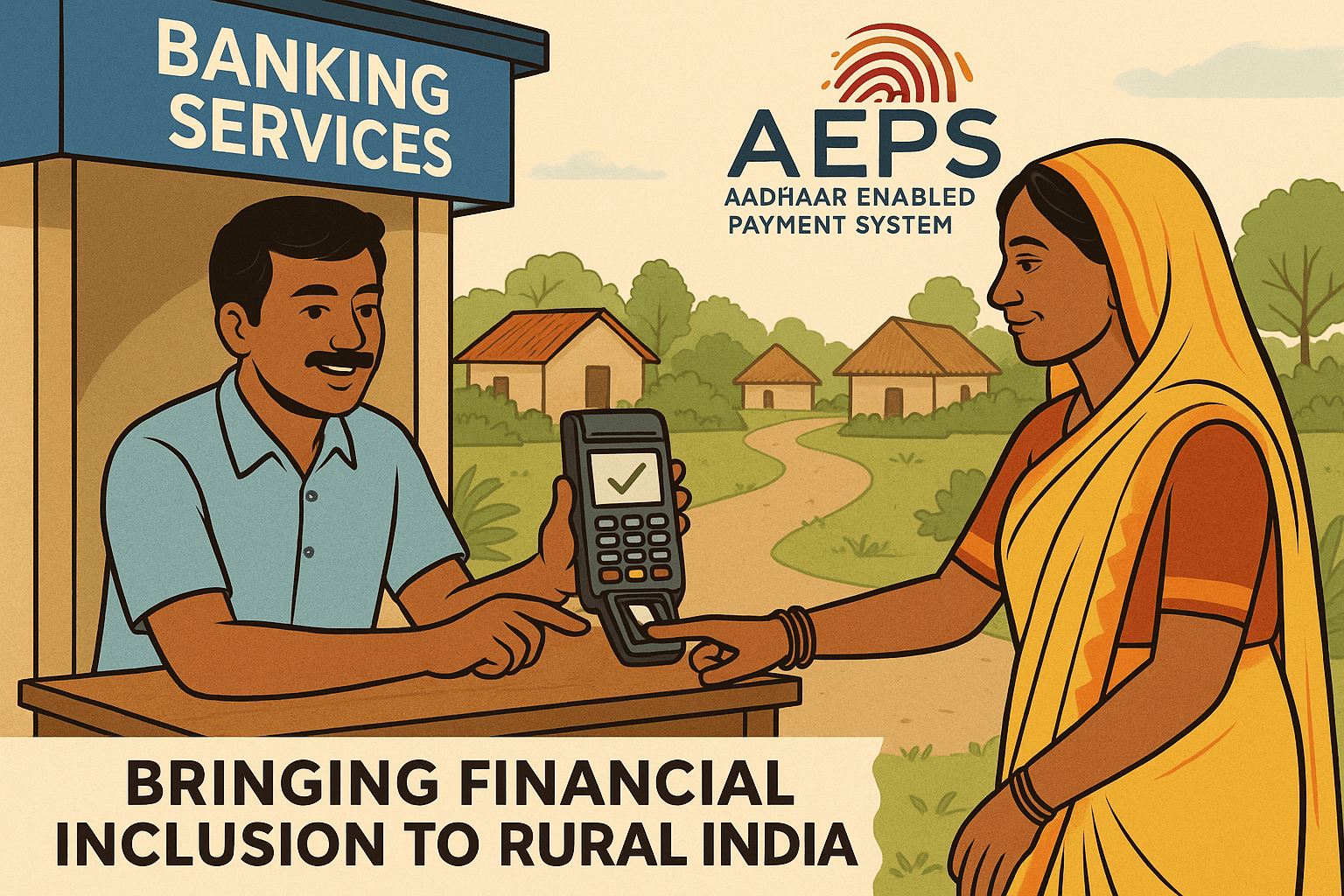In a country as vast and diverse as India, bringing banking services to (How It Revolutionized Banking in Rural India) every corner has always been a challenge. But Aadhaar Enabled Payment System (AEPS) changed the game, making financial inclusion a reality for millions in rural India.
AEPS is a bank-led model that allows transactions using just an Aadhaar number and biometric authentication, eliminating the need for physical cards, PINs, or even smartphones. Since its launch, it has transformed rural banking, empowering farmers, daily wage workers, and small business owners with easy access to cashless transactions.
But how exactly did AEPS achieve this? Let’s dive deep into its workings, impact, and the real stories behind its success.
What Is AEPS?
AEPS (Aadhaar Enabled Payment System) is a secure, UIDAI-approved digital payment platform that enables banking transactions using Aadhaar authentication. Introduced by the National Payments Corporation of India (NPCI), it allows users to:
-
Withdraw cash
-
Deposit money
-
Check bank balances
-
Transfer funds
-
Make payments
All of this is possible with just an Aadhaar-linked bank account and a fingerprint scan—no debit card, internet, or smartphone required.
How AEPS Works
-
Aadhaar Linking: The user’s bank account must be linked to their Aadhaar number.
-
Biometric Authentication: At a micro-ATM or banking correspondent (BC) point, the user selects the transaction type, enters their Aadhaar number, and scans their fingerprint.
-
Transaction Processing: The system verifies the details with UIDAI and processes the transaction instantly.
This simple yet powerful mechanism has made banking accessible even in the most remote villages.

How AEPS Made Banking Possible in Rural India
1. No Need for Smartphones or Internet
Unlike UPI or mobile banking, AEPS doesn’t require an internet connection. In rural areas, where smartphone penetration and network coverage are low, this has been a game-changer.
2. Banking Correspondents (BCs) as Local Heroes
Many rural areas lack bank branches. AEPS relies on Banking Correspondents (BCs)—local shopkeepers or agents equipped with micro-ATMs—who facilitate transactions. Villagers no longer need to travel long distances to access their money.
3. Financial Inclusion for the Unbanked
Before AEPS, millions lacked access to formal banking. Now, even illiterate or elderly individuals can perform transactions effortlessly using just their fingerprints.
4. Government Schemes & Direct Benefit Transfers (DBT)
The Indian government uses AEPS to distribute subsidies (LPG, pensions, MNREGA wages) directly into beneficiaries’ accounts, reducing corruption and delays.
5. Low-Cost & Secure Transactions
Since AEPS eliminates the need for cards and PINs, fraud risks are minimized. Transaction costs are also significantly lower compared to traditional banking methods.

Real-Life Impact: Stories from Rural India
Case Study 1: Farmers in Uttar Pradesh
Farmers in UP’s Bundelkhand region no longer wait for middlemen to cash their checks. With AEPS, they withdraw payments directly from BCs within minutes.
Case Study 2: Women’s Self-Help Groups in Kerala
Rural women, who previously depended on male family members for banking, now independently withdraw money using AEPS, boosting financial independence.
Case Study 3: MNREGA Workers in Odisha
Daily wage workers receive payments directly into their accounts and withdraw cash at local kirana stores, saving hours of travel to distant banks.
Challenges & Future of AEPS
While AEPS has been revolutionary, challenges remain:
-
Biometric Failures: Rough fingerprints (from farming or labor) sometimes cause authentication issues.
-
Dependence on Banking Correspondents: BC availability varies, affecting accessibility.
-
Limited Transaction Types: Unlike UPI, AEPS doesn’t support merchant payments or online shopping.
However, with AI-based biometric improvements and expanded BC networks, AEPS is set to grow further, ensuring no Indian is left out of the financial system.
Frequently Asked Questions (FAQs)
1. Is AEPS safe to use?
Yes! Since it uses Aadhaar-based biometric authentication, it is highly secure.
2. Do I need a smartphone for AEPS?
No, AEPS works without a smartphone or internet.
3. What transactions can I perform via AEPS?
Cash withdrawals, deposits, balance checks, and fund transfers.
4. Are there any charges for AEPS transactions?
Most banks offer AEPS services for free or at minimal costs.
5. How do I register for AEPS?
Ensure your bank account is Aadhaar-linked. Visit a Banking Correspondent (BC) or bank branch to complete the process.
Conclusion
AEPS has been a cornerstone of India’s financial inclusion journey, bridging the gap between urban and rural banking. By leveraging Aadhaar and biometrics, it has empowered millions with secure, convenient, and cost-effective banking.
As technology evolves, AEPS will continue to play a vital role in ensuring that even the remotest villages are part of India’s digital economy.
Disclaimer
This post is for educational purposes only. If you have any concerns regarding this content, please visit our DMCA page for removal requests. Ownership and accuracy of information have been verified to the best of our ability.
